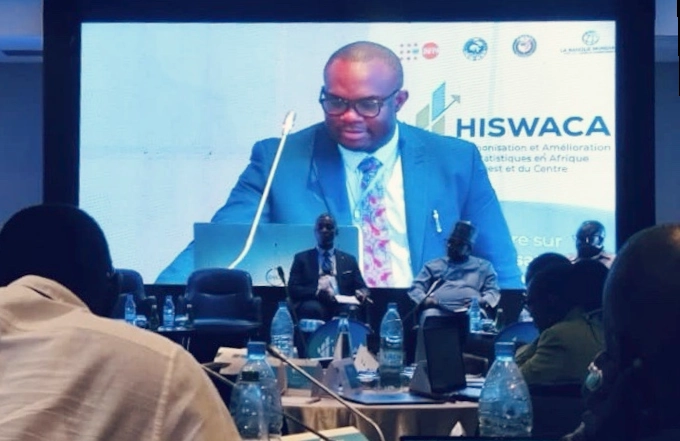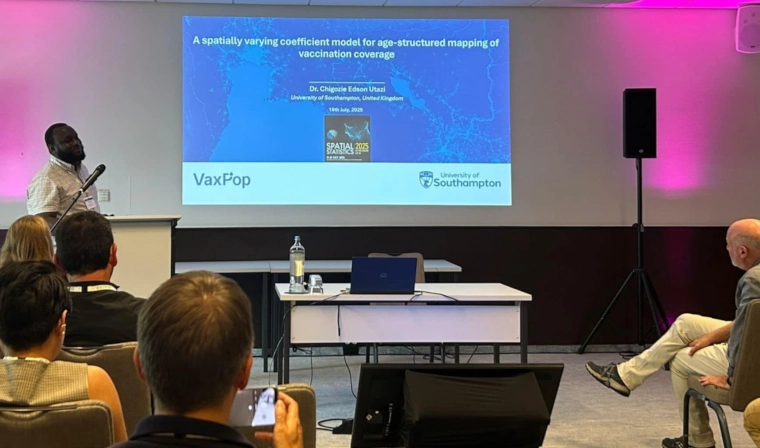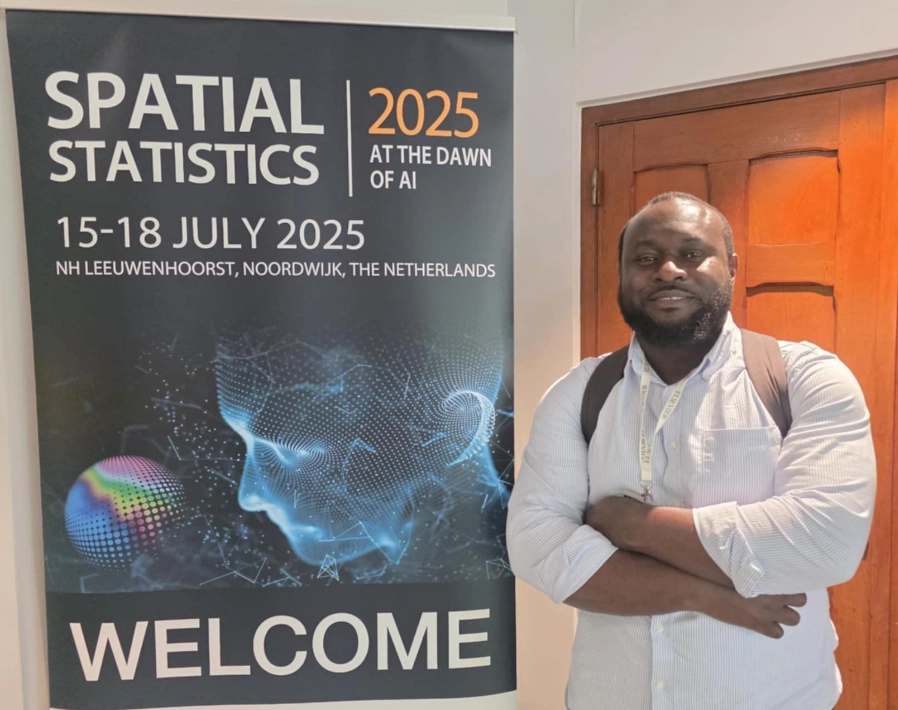Dakar, Senegal / Noordwijk, Netherlands – July 2025
WorldPop researchers presented their work at two major international gatherings this month – placing the spotlight on the power of data to drive progress across health and development in West and Central Africa.

In early July regional leaders, statisticians, and data experts convened in Dakar, Senegal for the High-Level Engagement and Advocacy Meeting on the Harmonization and Improvement of Statistics in West and Central Africa (HISWACA). Organised by the UNFPA West and Central Africa Regional Office, the event brought urgent attention to gaps in population data that threaten progress toward the 2030 Sustainable Development Goals (SDGs).
Senior Research Fellow, Dr Chibuzor Christopher Nnanatu shared cutting-edge research on the importance of small-area population estimates, stressing their critical role in tracking SDG indicators where census data are lacking or outdated.
“It’s clear we need more investment in statistical capacity, technology, and regional collaboration,” Dr Nnanatu said. “Without fine-scale, standardised data, we risk leaving the most vulnerable behind.”
Key outcomes from the meeting included:
- Calls for enhanced training and capacity-building in national statistics offices;
- Greater financial investment in demographic data systems;
- Stronger South-South partnerships;
- Adoption of innovative methods to estimate populations in data-poor settings.

Meanwhile, at the 2025 Spatial Statistics Conference held in Noordwijk, The Netherlands, WorldPop researcher Associate Professor Dr Chigozie Edson Utazi unveiled the VaxPop project’s latest work on mapping vaccination coverage using a novel spatially varying coefficient model.
Using data from Côte d’Ivoire’s 2021 Demographic and Health Survey, the model pinpointed areas with critical delays in measles vaccination for children under 15 months, providing valuable guidance for targeted immunisation campaigns.
“This approach gives us age-specific insights at a local level,” said Dr. Utazi. “It’s a powerful tool not just for vaccines, but for a wide range of public health indicators.”
The model supports both birth cohort and single-age estimations, and its flexible design – implemented via the INLA–SPDE framework – is now being extended to track health outcomes across both time and geography. Dr Utazi has recently led a journal article on this research, which is currently available as a preprint (see audio summary and link below).
Together, these events underscore a shared message: better data leads to better decisions – and with 2030 fast approaching, the need for precise, innovative, and inclusive data systems has never been more urgent.
We’re trialling the ‘Deep Dive’ audio summary feature of Google’s NotebookLM. This feature uses AI to create a podcast-like audio conversation between two AI-derived hosts that summarise key points of a document - in this case the Disappearing People article in Science.
As Google acknowledge that NotebookLM outputs may contain errors, we have been careful to check, edit and validate this audio.
Please contact us to let us know what you think.
Music: My Guitar, Lowtone Music, Free Music Archive (CC BY-NC-ND)
Learn more
- Regional leaders unite to harness population dynamics and bridge data gaps for sustainable development (UNFA blog)
- An Age-Structured Spatially Varying Coefficient Model for High Resolution Mapping of Vaccination Coverage (Preprint)
- Digital technologies to map zero-dose and unreached children in West and Central Africa (WorldPop project)



